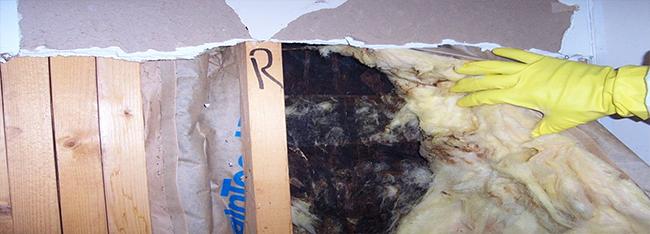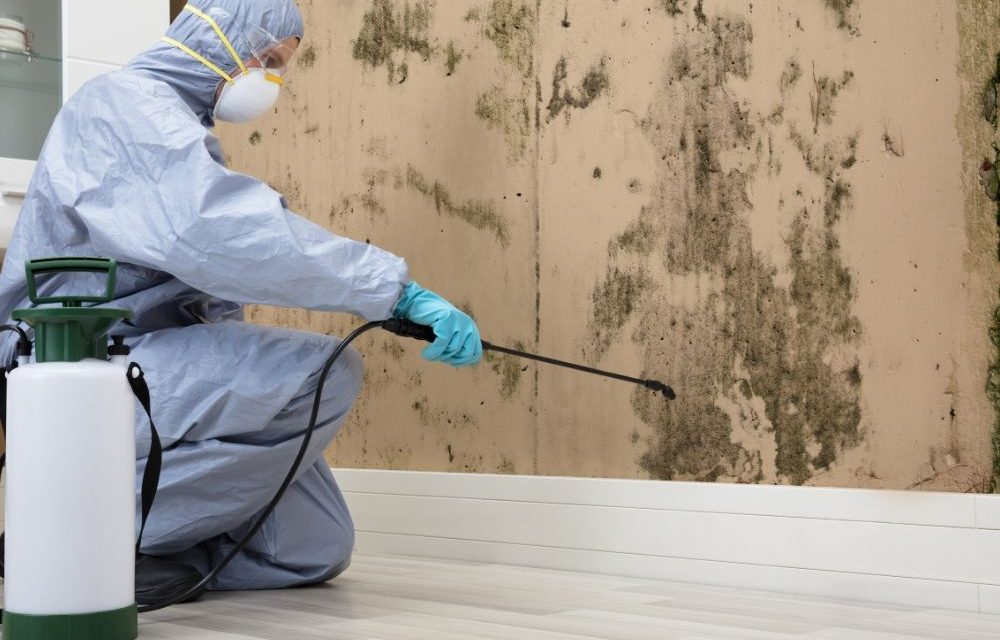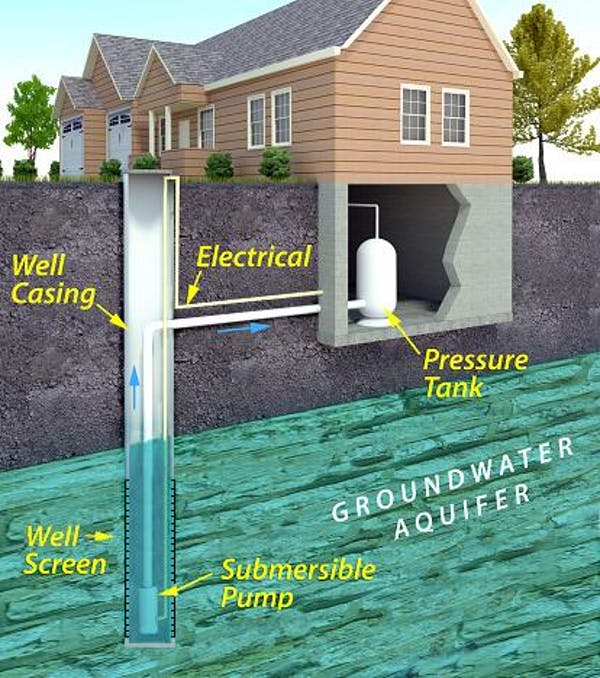Water Testing Guide
- Water Testing Guide A guide to Testing your Water: Measuring pH, Conductivity, Dissolved Oxygen and Turbidity
- The importance of water testing Everyone in the global community is affected by the quality of our water resources. The water we drink should be free from harmful chemicals to ensure good health. The purity of ground and surface waters in our environment is vital to ensuring sustainable use.
- The importance of water testing The water discharged by municipal waste water treatment plants and industrial facilities must be monitored to ensure compliance with environmental guidelines. Process waters must be kept clean from contaminants to ensure product quality and acceptable exposure levels. It is for these reasons that water samples are collected and tested for pH, conductivity, dissolved oxygen and turbidity.
- pH pH is the measure of the acidity or alkalinity of a solution. Some of the areas in which pH is monitored are public drinking water systems, industrial and municipal wastewater plants, agriculture, aquaculture, environmental monitoring, winemaking, pool and spa water analysis, food and dairy industries, boiler and cooling towers, pulp and paper mills, acid mining and the chemical manufacturing industry.
- pH The pH scale ranges from 0 to 14. A pH of 0-6 is acidic, a pH of 7 is neutral and a pH of 8-14 is alkaline. Pure water has a neutral pH and human saliva is close to neutral, while our blood is slightly alkaline. Seawater is between 7.7 and 8.3 on the pH scale, and products like hand soap, ammonia and bleach are more alkaline in the range from 9.0 12.5. Highly alkaline baking soda is often used to raise the pH of acidic water to a more neutral level.
- pH In agriculture, pH affects the ability of plant roots to absorb nutrients. Calcium, phosphorus, potassium and magnesium are likely to be unavailable to plants in acidic soils. Plants have difficulty absorbing copper, zinc, boron, manganese and iron in basic soils. By managing soil pH, you can create an ideal environment for plants and often discourage plant pests at the same time.
- pH Aquarists rely heavily on pH measurements for proper fish keeping. Large bodies of water such as lakes and oceans have very little pH fluctuation, making fish intolerant to pH swings. Fish keeping is a delicate pH balancing act, as fish subjected to pH swings are prone to disease and early death.
- pH Due to chemical water treatment and other factors, tap water in many large cities throughout the U.S. tends to be alkaline with a pH near 8.0. Though drinking tap water with a high (alkaline) pH is not harmful, the declining quality of tap water over the years has resulted in many people opting for faucet or pitcher filters to remove chlorine, chloramines, pesticides and other substances. These filters do not alter the pH of the water. Alternately many people choose to buy purified bottled water or fresh spring water, more likely to have a pH closer to neutral.
- pH pH test strips, pocket meters, portable meters or bench top meters are used to measure pH. Meters range from simple and inexpensive pen-like devices to complex and expensive laboratory instruments with data logging capability and computer interfaces. Inexpensive models sometimes require that temperature measurements be entered to adjust for the slight variation in pH caused by temperature fluctuations of the sample.
- pH Today most models are equipped with Automatic Temperature Compensation (ATC) where adjustments due to temperature are done internally by the meter. Meters and specialized probes are available for use in applications such as environmental, quality control and laboratories testing.
- How do I use a pH meter? A typical pH meter consists of a special measuring probe (a glass electrode) connected to an electronic meter that measures and displays the pH reading. The pH probe measures pH as the activity of hydrogen ions surrounding a thin-walled glass bulb at its tip. The probe produces a small voltage (about 0.06 volt per pH unit) that is measured and displayed as pH units by the meter.
- How do I use a pH meter? Before testing your samples, calibration of the instrument should be done in accordance with the manufacturers instructions daily, though modern instruments will hold their calibration for around a month.
- How do I use a pH meter? Calibration can be done at one, two or three points on the pH scale depending on the meter. A buffer solution of 7 is used for one point calibration. Meters with two or three point calibration allow you to calibrate at 7 and then calibrate with buffer solutions of 4 and 10 to insure your meter is reading accurately in that range.
- How do I use a pH meter? After calibration, the probe is rinsed in distilled, deionized water to remove any traces of the buffer solution, blotted with a clean tissue to absorb any remaining water which could dilute the sample and thus alter the reading, and then quickly immersed in the sample. The pH value is then displayed on the meter. When testing acidic solutions a pH 4.0 buffer should be used as the second calibration solution to insure accurate readings throughout the range. Likewise, when testing alkaline solutions a 10.0 buffer should be used.
- How do I use a pH meter? Between uses, the probe tip, which must be kept wet at all times, is typically kept immersed in a small volume of storage solution, which is an acidic solution of around pH 3.0. In an emergency, pH 4.0 buffer, pH 7.0 buffer or tap water can be used, but distilled or deionized water must never be used for longer-term probe storage as the relatively ionless water ‘sucks’ ions out of the probe through diffusion, which degrades it. Always follow the manufacturers instructions for calibration and use.
- Conductivity Between uses, the probe tip, which must be kept wet at all times, is typically kept immersed in a small volume of storage solution, which is an acidic solution of around pH 3.0. In an emergency, pH 4.0 buffer, pH 7.0 buffer or tap water can be used, but distilled or deionized water must never be used for longer-term probe storage as the relatively ionless water ‘sucks’ ions out of the probe through diffusion, which degrades it. Always follow the manufacturers instructions for calibration and use.
- Conductivity Conductivity monitors the amount of nutrients, salts or impurities in water and is measured in many fields such as the chemical industry, agriculture, public drinking water systems, aquaculture, water conditioning and treatment and environmental monitoring.
- Conductivity Conductivity (EC) is a measure of a material’s ability to conduct an electric current. It estimates the amount of total dissolved solids or salts (TDS) or the total amount of dissolved ions in water. The more salt, acid or alkali in a solution, the greater its conductivity. Pure water does not conduct electricity.
- Conductivity In agricultural systems for instance, the conductivity of the nutrient solution needed for plant growth must be known. If it is too weak, plants will not get the vital elements they need to grow. If it is too strong, plants run the risk of root burn, especially as evaporation occurs within the growing environment. The nutrient solution needs to be measured or monitored regularly so you know when to add more concentrated solution or when to add fresh water. A high electrical conductivity will stress plants and cause productivity losses.
- Conductivity Concerning cooling towers and boilers, companies may be consuming more make-up water than necessary in rinsing their equipment. This contributes to extra water consumption, chemical consumption, generation of wastewater, and in the case of boilers, fuel consumption. In water rinse tanks, contamination is caused by residual surface chemicals being “dragged in” on the parts being rinsed. In HVAC equipment, water impurities occur as a result of minerals and constituents in the feedwater that remain even after pretreatment.
- Conductivity Water in rinse tanks, boilers, and cooling tower systems accumulate these impurities over time, requiring addition of fresh water and removal of a portion of the contaminated water to maintain optimal process or system conditions. Conductivity is an easy characteristic to measure, and in these processes, is typically very indicative of the total dissolved solids (TDS) concentration of the water.
- Conductivity With conventional meters, conductivity is obtained by applying a voltage across two probes and measuring the conductance of the solution. Solutions with a high conductivity produce a higher current. The conductivity unit of measurement commonly used is the Siemens/cm (S/cm) or microSiemens/cm (uS/cm).
- How do I use a conductivity meter? There are basically two types of conductivity meters – one is the small “stick” type meter and the other is the larger, more complex and more accurate bench top or portable model. Stick types can fit in your pocket and as such are quite useful. They are not as accurate as the larger models for the larger models often have a number of functions, are often combined with a pH meter and the electrode is separate and plugs into the instrument.
- How do I use a conductivity meter? It is very important to calibrate the instrument every time it is used otherwise it will cause inaccurate readings. Calibration means reading a solution of known conductivity and adjusting the meter to read the same. Calibrate the probe using a standard solution in the range of the samples being tested.
- How do I use a conductivity meter? Place the probe in a standard solution, condition, rinse probe in a second sample of standard solution, use a third sample of standard solution to calibrate, and then adjust the cell constant until the specified value is displayed. Recalibrate when ranges are changed, or if readings seem to be incorrect.
- How do I use a conductivity meter? To take a conductivity reading immerse the electrode/probe in the solution, move the electrode up and down a few times to remove any bubbles. Wait thirty seconds for the sample and electrode to come to the same temperature and then read the measurement. The instrument will usually do the temperature correction for you. The electrode should be immersed over the plates and reference electrode. With the stick type meter, immerse the pins to the level indicated in the instructions. It is important that the level of the liquid is not above the waterproofed section of the electrode or meter.
- How do I use a conductivity meter? The conductivity of a solution is highly temperature dependent, therefore it is important to either use a temperature compensated instrument or calibrate the instrument at the same temperature as the solution that you want to measure.
- How do I use a conductivity meter? Electrodes can be cleaned with mild liquid detergent and/or dilute nitric acid (1% wt) by dipping or filling the cell with solution and agitating for 2 to 3 minutes. Dilute HCl (hydrochloric acid) or H2SO4 (sulfuric acid) may also be used. When stronger cleaning is needed, try concentrated HCl mixed into 50% isopropanol (rubbing alcohol). Rinse the cell several times with distilled or deionized water and recalibrate before use. Always follow the manufacturers instructions for calibration and use.
- Dissolved Oxygen (DO) Industrial and municipal wastewater plants, environmental monitoring, aquaculture, winemaking, pulp and paper mills and boilers and cooling towers are some of the areas where dissolved oxygen is monitored. Dissolved oxygen is oxygen gas (O2) that is dissolved in water. Oxygen gets into water by diffusion from the surrounding air, by aeration (rapid movement), and as a waste product of photosynthesis. Oxygen is a necessary element to all forms of life. Adequate dissolved oxygen is necessary for good water quality.
- Dissolved Oxygen (DO) In the natural environment, the stream system both produces and consumes oxygen. Natural stream purification processes require adequate oxygen levels in order to provide for aerobic life forms. Respiration by aquatic animals, decomposition, and various chemical reactions consumes oxygen. As dissolved oxygen levels in water drop below 5.0 mg/l, aquatic life is put under stress. Oxygen levels that remain below 1-2 mg/l for a few hours can result in large fish kills.
- Dissolved Oxygen (DO) Wastewater from sewage treatment plants often contains organic materials that are decomposed by microorganisms, which use oxygen in the process. Other sources of oxygen-consuming waste include stormwater runoff from farmland or urban streets, feedlots, and failing septic systems. Dissolved oxygen can be monitored using an electronic oxygen meter or chemical test kit and is measured in parts per million (ppm) or mg/l or percent saturation (%) which is defined as the percentage of oxygen dissolved in 1 liter of water.
- How do I use a DO Meter? A dissolved oxygen meter is an electronic device that converts signals from a probe that is placed in the water into units of DO in milligrams per liter. Most meters and probes also measure temperature. The probe is filled with a salt solution and has a selectively permeable membrane that allows DO to pass from the stream water into the salt solution.
- How do I use a DO Meter? The DO that has diffused into the salt solution changes the electric potential of the salt solution and this change is sent by electric cable to the meter, which converts the signal to milligrams per liter on a scale that can be read. If you use a meter and probe, you must do the testing in the field; dissolved oxygen levels in a sample bottle change quickly due to the decomposition of organic material by microorganisms or the production of oxygen by algae and other plants in the sample. This will lower your DO reading.
- How do I use a DO Meter? Calibration is performed with a zero oxygen solution. Calibrating the instrument to a zero oxygen solution, referred to as zeroing the instrument, is accomplished by submersing the probe in a saturated solution of sodium sulfite. For full-scale calibration, the forced air method is recommended. This is done by placing the probe in the middle of a vortex so that the air can be forced through the membrane quickly.
- How do I use a DO Meter? Air can be forced through the membrane faster in a vortex than if the probe were simply sitting out in the air. A vortex can be created using a stirrer, stir bar, beaker of distilled water, and a probe holder to keep the probe above the water. Store a DO probe with the membrane covered by distilled water. Covering the membrane with distilled water prevents the KCl fill solution from evaporating through the membrane. Always follow the manufacturers instructions for calibration and use.
- Turbidity Turbidity is a water quality term that refers to the cloudiness of water. It is caused by suspended materials such as clay, silt, organic matter, phytoplankton and other microscopic organisms being picked up by water as it passes through a watershed. The greater the amount of total suspended solids in water, the murkier the water appears, the higher the turbidity measurement will be.
- Turbidity Turbidity is an important water quality indicator because contaminants such as bacteria, viruses and parasites can attach themselves to the suspended particles in turbid water. These particles then interfere with disinfection of the water by shielding contaminants from the disinfectant (e.g. chlorine). Turbidity is commonly measured in public drinking water systems, wastewater treatment systems, and environmental monitoring.
- Turbidity Public water suppliers are required to treat their water to remove turbidity and it must be virtually eliminated for effective disinfection (usually by chlorine) to occur. In all processes in which disinfection is used, the turbidity must always be low, preferably below 1 NTU. Turbidity is also one of the main parameters monitored in wastewater. Measuring turbidity at the end of the wastewater treatment process is necessary to verify that the values are within regulatory standards. Generally, the turbidity value has to be between 0 and 50 FTU, with an accuracy of +/- 3 FTU, depending on the phase of the wastewater treatment process.
- Turbidity Turbidity is an optical property that results when light passing through a liquid sample is scattered. A turbidity meter consists of a light source that illuminates a water sample and a photoelectric cell that measures the intensity of light scattered at a 90 angle by the particles in the sample. Turbidity will not give results for a specific pollutant but rather is a measure of how much the material suspended in water decreases the passage of light through the water.
- Turbidity The turbidity standard unit of measure is NTU (Nephelometric Turbidity Unit), the unit of measure adopted by the EPA (Environmental Protection Agency), or FNU (FormazineNephelometric Unit), the unit of measure adopted by the ISO (International Organization for Standardization) (1 NTU = 1 FTU). Turbidity levels can range from less than 1 NTU to more than 1,000 NTU. At 5 NTU water is visible cloudy and at 25 NTU it is murky.
- How do I use a turbidity meter? The basic instructions for using a turbidity meter are calibrating the meter to a set of turbidity standards by filling a cuvette (small, glass vial) with a known standard and inserting the cuvette into the chamber of the turbidity meter. Normally a meter can be calibrated with two prepared standards. The concentrations of the standards should be chosen from the low and high ends of the range of the meter.
- How do I use a turbidity meter? Once calibration is complete, individual water samples can then be tested by placing a water sample into a clean cuvette, inserting it into the chamber of the turbidity meter and reading the displayed amount on the meter. When a cuvette is inserted into the meter it should be dry and wiped clean of smears of fingerprints, as anything on the cuvette could lead to an inaccurate reading of turbidity. Always follow the manufacturers instructions for calibration and use.
- Commonly Asked Questions Q. If I order a pH meter, what accessories do I need to use with it? A. You need a pH electrode and at least two pH buffers, one at pH 7 and the other at either pH 4 or 10 and storage and cleaning solution.
- Commonly Asked Questions Q. Regarding pH, is automatic temperature compensation (ATC) really necessary? A. The necessity of ATC depends on the required accuracy of a pH reading. pH readings vary with temperature. For example, a sample with a pH of 7 at 25C, may have a pH of 7.08 at 5C and a pH of 6.98 at 60C.
- Commonly Asked Questions Q. How should I store my conductivity electrode? A. Rinse it in tap water when you are finished using it. You can store your electrode either wet or dry. If it is stored dry you will need to recondition the electrode before use.
- Commonly Asked Questions Q. I just received my DO meter and it does not work, is there a serious problem? A. No. This is common. The electrode must be allowed to polarize before any readings can be taken. In order to polarize the electrode must be connected to a meter. Polarization time varies from meter to meter so polarization could be from 10 minutes to 6 hours. Check your manual for the exact time. Also check the membrane. If air is trapped under the membrane you could get incorrect readings.
- Commonly Asked Questions Q. How often should I replace my DO membranes? A. Recommended service time is 2-4 weeks depending on the application.
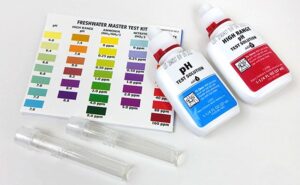
A review of permissible limits of drinking water
Water is one of the prime necessities of life. We can hardly live for a few days without water. In a man’s body, 70-80% is water. Cell, blood, and bones contain 90%, 75%, and 22% water, respectively. The general survey reveals that the total surface area of earth is 51 crore km2 out of which 36.1 crore km2 is covered sea. In addition to this, we get water from rivers, lakes, tanks, and now on hills. In spite of such abundance, there is a shortage of soft water in the world. Physicochemical parameter of any water body plays a very important role in maintaining the fragile ecosystem that maintains various life forms. Present research paper deals with various water quality parameter, chlorides, dissolved oxygen, total iron, nitrate, water temperature, pH, total phosphorous, fecal coli form bacteria, and adverse effect of these parameters on human being.
Drinking water is one of the basic needs of life and essential for survival. Still more than one billion people all over the world do not have ready access to an adequate and safe water supply and more than 800 million of those unsaved live in rural areas
ground water is being used as raw water for 85% public water supply. (According to world health report 1998)water supply varies widely in terms of region and country. In 1970s, of the approximately 2.5 billion people in developing world, only 38% has safe drinking water. At the beginning of the 1980s, water supply coverage was 75% in urban areas and 46% in rural areas. In developing countries, 75% of the population had access to water supply.
So they are always prone to loss of their lives or cost a big toll to save themselves from the occurrence of different water-borne disease. Water contamination due to pathogenic agents, chemicals, heavy metals, pesticides water disinfectants, and thereby product as a consequence of industrial and agricultural activities leaching from soil, rocks, and atmospheric deposition and other human activities has become a hazard to human health in several regions of world.
Pesticides estimation method
Pesticides estimation has been done with gas liquid chromatography. Gas liquid chromatography is a partition chromatography in which stationary phase is liquid and mobile phase is gas where partition of compound takes place between two phases. The requirement of GLC is that compound or its decomposed stable product should be volatile at the working (column) temperature. The column, oven, and the detector are three important components of gas chromatography. The column is the heart of gas chromatography. It is used to hold the separating media in a fixed position relative to a constant carrier gas flow through media. It is composed of long narrow, metal, or glass tube filled with a packing material consisting of liquid stationary phase coated on a solid support. The liquid phase should have a boiling point more than over the working temperature (200-300°C). The stationary phase is mostly organic silicon.
The Beginner’s Guide to Aquarium Test Kits
Water quality
Just one problem…. In an aquarium setup, poor water quality and good quality water can look identical. Let’s say that the water in your aquarium has ammonia levels that are too high. The problem is that you cannot tell with your eyes.
But to your fish, the difference is obvious. Painfully obvious. Since poor water quality can cause your fish stress and also lead to disease and even death, it’s something that you want to monitor closely.
They look identical, right?
Well, the water on the right actually contains enough ammonia to kill most fish. While the water might look fine to you, your fish could be suffering! So, how do you test for something that your eyes can’t see?
What is an aquarium test kit?
An aquarium test kit is designed to measure a specific water parameter. I know, I know, measuring things is boring! But if you want to have any success keeping fish, then it’s something you must come to terms with. The reason a test kit is so important is that an imbalance in water parameters can cause chaos in your tank. For instance, take nitrites – if the levels in your tank rise too high, your fish are going to die.
To put it simply, you add both aquarium water and a few drops of testing solution to the test tube. Wait for the solution to change color and compare it to the color card to get a result. Sound confusing? Don’t worry, it’s really easy. I’ll guide you through the steps of using a test kit later in this guide.
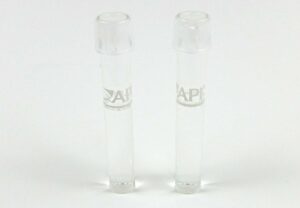
Water Activity (aw) in Foods
The water activity (a w) of a food is the ratio between the vapor pressure of the food itself, when in a completely undisturbed balance with the surrounding air media, and the vapor pressure of distilled water under identical conditions. A water activity of 0.80 means the vapor pressure is 80 percent of that of pure water. The water activity increases with temperature. The moisture condition of a product can be measured as the equilibrium relative humidity (ERH) expressed in percentage or as the water activity expressed as a decimal.
Most foods have a water activity above 0.95 and that will provide sufficient moisture to support the growth of bacteria, yeasts, and mold. The amount of available moisture can be reduced to a point which will inhibit the growth of the organisms. If the water activity of food is controlled to 0.85 or less in the finished product, it is not subject to the regulations of 21 CFR Parts 108, 113, and 114.
SORPTION BEHAVIOR
The bacterial cell can only transfer nutrients in and waste materials out through the cell wall. The materials, therefore, must be in soluble form to permeate the cell wall. A portion of the total water content present in food is strongly bound to specific sites and does not act as a solvent. These sites include the hydroxyl groups of polysaccharides, the carbonyl and amino groups of proteins, and others on which water can be held by hydrogen bonding, by ion-dipole bonds, or by other strong interactions
The binding action is referred to as the sorption behavior of the food. The most successful method for studying the sorption properties of water in food products has been the preparation of “Sorption Isotherms,” or curves relating the partial pressure of water in the food to its water content at constant temperature. The same practice is followed to study curves relating water activity under equilibrium conditions to water content.
Two basic methods can be used to obtain the constant temperature sorption curves. In the first method, food of known moisture content is allowed to come to equilibrium with a small headspace in a tight enclosure and partial pressure of water activity is measured manometrically, or relative humidity is measured using a hyqrometer. Water activity is equal to equilibrium relative humidity divided by 100: (a w = ERH/100) where ERH is the equilibrium relative humidity (%). Relative humidity sensors of great variety are available for this purpose, including electric hygrometers, dewpoint cells, psychrometers, and others.
Water Temperature
Water temperature is critical because it is an important quality in environmental parameters. It is important to measure water temperature. By doing so, we can see the characteristics of the water such as the chemical, biological, and physical properties of the water, as well as the possible health effects. Water temperature is an important factor in determining whether a body of water is acceptable for human consumption and use.
The temperature in water governs the kinds and types of aquatic life that live in it.
It regulates the maximum dissolved oxygen concentration of the water.
Temperature influences the rate of chemical and biological reactions.
It affects the dissolved oxygen level in water, photosynthesis of aquatic plants, metabolic rates of aquatic organisms, and the sensitivity of these organisms to pollution, parasites, and disease.
TEMPERATURE: DEFINITION
“temperature is currently defined by the ‘International Practical Temperature Scale of 1968, amended edition 1975’ in terms of the electrical resistance of a standard platinum-resistance thermometer at three calibration points. (The triple point of water, the boiling point of water at one standard atmosphere, and the freezing point of zinc).”
This is because most consumers complain about tap water at 19°C or higher. The intensity of taste is greatest for water at room temperature and is significantly reduced by chilling or heating the water. Increasing the temperature will also increase the vapour pressure of trace volatiles in drinking water and, therefore, could lead to increased odour. It is also possible that micro fungi can grow inside the internal plumbing systems of buildings, leading to complaints of musty, earthy, or mouldy tastes and odours if the temperature rises above approximately 16°C. It is advisable to keep the growth of such organisms to a minimum by using cold water because certain organic growths have been shown to protect bacteria from the effects of chlorination.
In the Water Quality Guidelines, it states, “the temperature dependence of most chemical reactions stems from the activation energy associated with them. The rates of chemical reactions decrease with decreasing temperature. The relative concentrations of reactants and products in chemical equilibria can also change with temperature… Temperature can, therefore, affect every aspect of the treatment and the delivery of potable water.”

